Sustainability Week at Joseph Ash Galvanizing
Last week was sustainability week at Joseph Ash Galvanizing; a week for colleagues to focus on all things sustainability.
It can be easy to forget about sustainability when busy with day-to-day tasks, so the week serves to encourage colleagues to focus on environmental impacts and engage with the natural environment.
As part of the wider Hill & Smith PLC Group, Joseph Ash Galvanizing’s Technical department developed several activities and initiatives for the week to boost our site’s green credentials, have fun, and compete for prizes.
Take a look at some of the activities that took place across our sites below:
Biodiversity initiatives
Some of our galvanizing sites have large spaces of land surrounding them, which could be rewilded to encourage biodiversity. Managers were encouraged to let nature reclaim some of this excess land by allocating sections to be reclaimed by nature and scattering wildflower seeds to encourage new plant growth.
The new areas reclaimed by nature also serve to give colleagues a change of scenery, and potentially allow for new break areas for colleagues as we get closer to the warmer months.
Our Telford site was particularly keen to share their rewilding activities, fencing off a section of land using galvanized steel and dedicating the land enclosed to wildflower growth.
A competition to make the best birdbox was also held to further encourage biodiversity, with vouchers up for grabs for the winner.
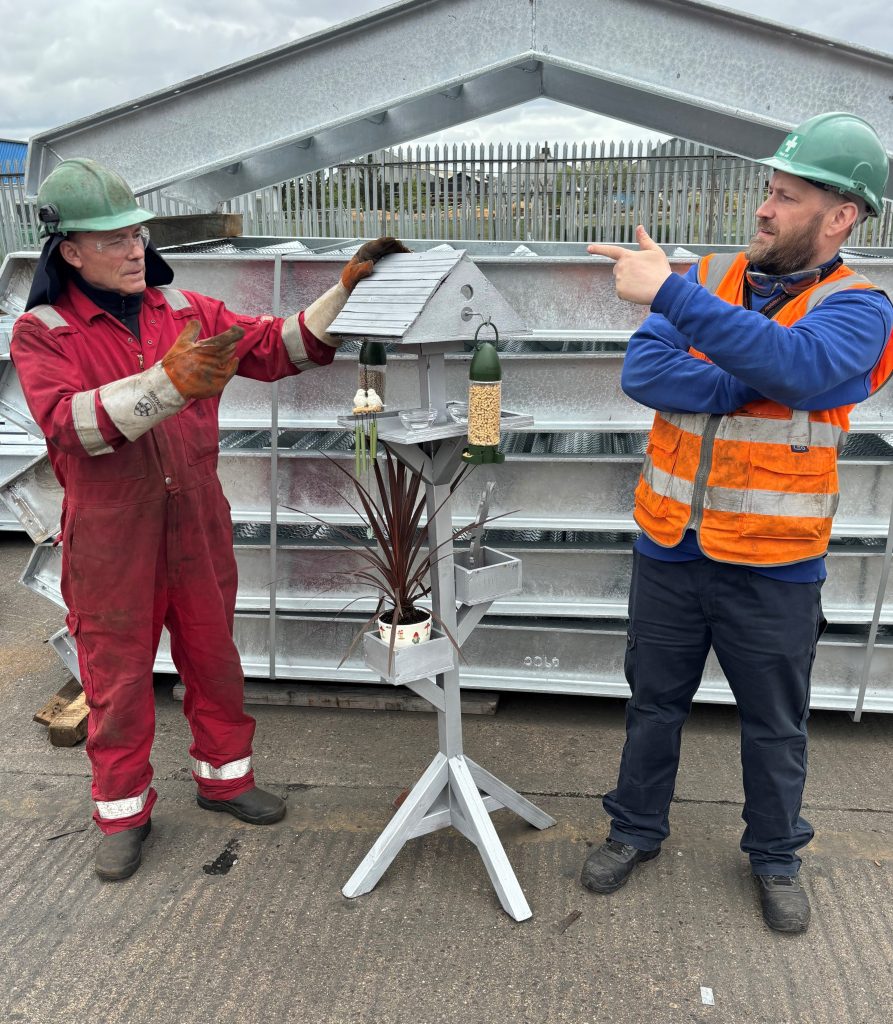
Litter picking
Our Telford and Walsall sites have been busy taking part in some litter picking. The litter picked up can be correctly recycled instead of being left out and harming the environment.


Energy saving treasure hunt
To reduce carbon footprints at each of our sites, colleagues were encouraged to form groups and walk around the sites and and evaluate their environment, keeping sustainability in mind. This could include turning off lights, machines and other resources and questioning if they need to be used.
The energy saving treasure hunt is not a new concept; it was developed in 1999 by Toyota, and is a great activity for all companies to conduct, regardless of industry.
Competitions and prizes
There’s nothing like a bit of friendly competition, especially if it helps the environment! Prizes will be awarded for colleagues on a number of different categories:
- “Best Birdbox” award for the colleague who makes the best birdbox, with a voucher up for grabs for the winner – congratulations to Team Premier Galvanizing Corby!
- “Greatest Reduction in Energy” award for the site with the greatest reduction in CO² emissions per ton of galvanized steel for the month of May.
- “Most Sustainable Site” award for the site with the lowest year-to-date CO² output relative to galvanizing output.
Winners will be confirmed in the next few days/weeks.
Karl Hicks, Environmental and ESG Advisor at Joseph Ash, commented on the week:
“It’s been a great Sustainability Week where all the sites I’ve been to have shown real enthusiasm for getting involved, with dare I say a bit of competitive spirit. I am particularly chuffed with the fusion of “sustainability” & “galvanizing” that I’ve seen this week that demonstrates that the two are interconnected within the circular economy.
“My initial ideas for how sites could get involved have been improved on. I know that other things are in the pipeline across the sites in the next few weeks, and I’m looking forward to seeing those and dishing out awards for them accordingly.”
Overall, the week has been a huge success. Thank you and well done to all for your efforts in improving our sustainability and environmental impact!
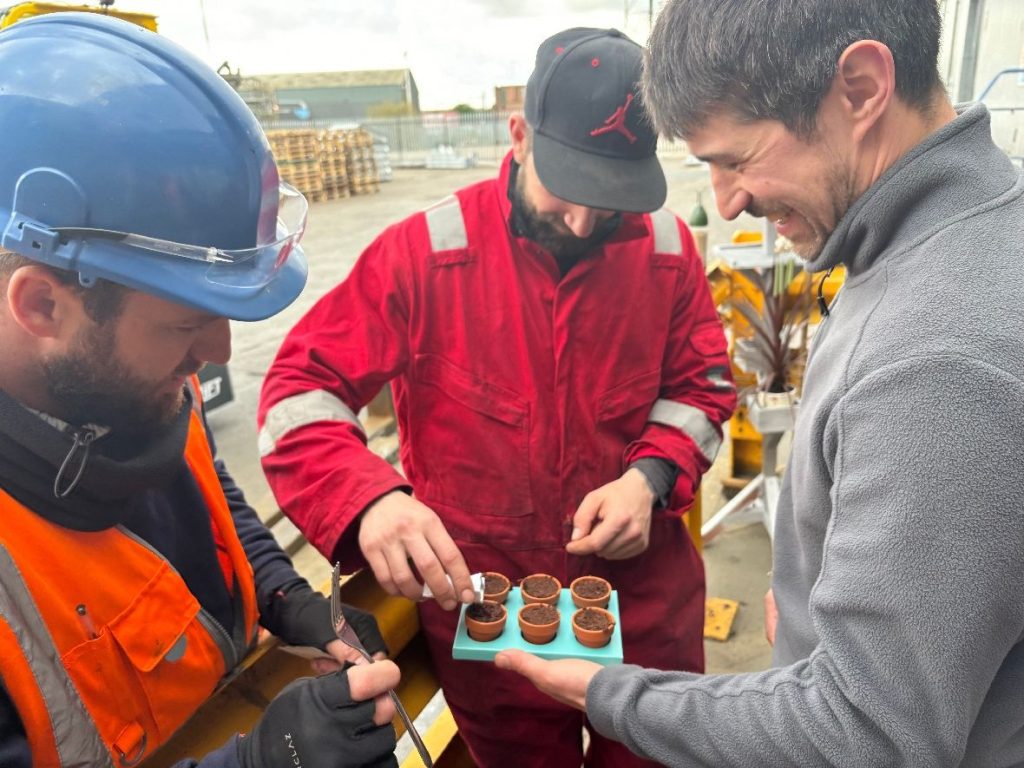


Interested in learning more about our sustainability initiatives?
Whether you frequently arrange for steel be galvanized, or have yet to consider hot dip galvanizing for steel, it’s important to make sure you understand the process and what to look out for when choosing a galvanizing service provider.
We interviewed Mike Worth, Head of Technical and ESG, to find out all about his expertise with the galvanizing industry, what makes Joseph Ash a great place for high-quality galvanizing, and points for customers to be aware of when booking work in for galvanizing.
Can you give us an overview of your role?
As Head of Technical & ESG, I am responsible for supporting the plants with ensuring both the chemistry of process tanks, and the metallurgy of the galvanizing baths, are operated within given parameters. This is to ensure a consistently high level of product performance and quality is achieved. The Technical department offers guidance on legislative and standard changes and provides technical advice – both internally and externally – regarding the design, processing and quality of products sent for galvanizing.
The department is also responsible for managing the business’ environmental and energy management systems and its transition to a Net Zero future. The department assists with project management support within these areas, where existing equipment is replaced or new technology is installed.

What should customers be aware of when looking to galvanize their steel?
Steel composition
It’s important to ensure that the steel supplied is suitable for galvanizing. When specifying or sourcing steel for fabrications, the steel supplier should be made aware that the steel will be galvanized and supply accordingly. This should be plain carbon, low alloy steels. Where high strength, hardened/cold-worked or high alloy steels are specified, the galvanizer must be consulted at the design stage to ensure any potential concerns can be addressed at the earliest possible stage.
Steel condition
The pre-treatment stage of the galvanizing process involves thorough cleaning of the steel to remove light oils/greases, rust and scale. This allows the characteristic coating growth synonymous with hot dip galvanizing. Whilst robust, this cleaning process cannot remove all potential contaminants that can be present on fabricated steelwork. Paints, wax crayon, labels and weld anti-spatter that is not water-soluble are examples of products that will not be removed by normal processing. Where these products are used, they should be ground off prior to sending material for galvanizing to prevent uncoated areas during the process.
Another common problem can be laser or flame cut edges. The heat-affected zone created by these processes has a dissimilar chemistry to that of the main body of steelwork which can create a very thin (unreactive) coating with poor adhesion. These areas should also be ground prior to sending material for galvanizing.
Design
The steel’s design should also be considered. This includes:
- Dimensions – Can the material fit in the bath? Will it need to be double-dipped?
- Weight – Is the work too heavy for cranes or FLTs?
- Venting and drainage – Have sufficient venting and drain holes been placed? Can the steel be dipped safely, with all internal areas suitably vented to allow air to escape and process chemicals and zinc to drain?
- How will the work be suspended by the cranes – are there suitable lifting points for the lifting equipment?
- Section size – No part of the fabrication should be more than 2.5x the thickness of any other, as this can cause distortion as the heat transfer of these sections will be different.
We have a venting tips and tricks poster to help our customers with designing their steel for galvanizing.

How does Joseph Ash take pride in the quality of their galvanizing?
I have, on a number of occasions, been asked by existing and potential customers to comment on the quality of galvanizing by another supplier. I take great pride in the extensive work that both myself, the department, and colleagues with a technical aspect to their role have completed to refine the chemistry and metallurgy of our processes and deliver a high standard of coating finish. In my experience, this level of finish is not achieved by other galvanizers.
Hot dip galvanizing has traditionally been an industrial corrosion protection system, where aesthetics were once a secondary consideration. Through our work we are able to not only deliver a product which performs to the highest expectations of corrosion resistance and durability but also with an aesthetic that is incredibly pleasing.
Why is quality important when looking for a galvanizer?
Industry standards
BS EN ISO1461 states a certain level of product quality must be achieved for general hot dip batch galvanizing to be supplied to the marketplace. The coating must be continuous, with no bare areas that would corrode if not repaired. It must also be relatively smooth, with no sharp edges or zinc build-up that could cause harm or prevent the article from being installed or used. The coating must also be above the specified minimum mean coating thicknesses detailed within the standard.
Installation and use
Steel articles that come for galvanizing are products. The design is critical for ensuring these products are suitable to install and use by our customers and end clients. If the galvanizing process is not considered at the design stage, a product could be returned with zinc build-up on critical faces (i.e. plates that are bolted together), meaning the product cannot be installed. Hole tolerances/threaded components also may not be usable after galvanizing. A product may have to be suspended a certain way through the process, leading to holes being required on visible faces which reduces the aesthetic appeal of the product.

How does the quality of the galvanized finish impact the steel’s lifespan?
If the galvanizer is consulted early on in a product’s design phase, the product can be designed suitably based on considerations regarding steel composition and condition. If the galvanizer pays particular attention to their process chemistry and bath metallurgy then hot dip galvanizing can last, maintenance free, for decades. In some cases, it can last for over a century.
Where these considerations are not given – for example, if the galvanizer skips or rushes stages of the process; or doesn’t operate within parameters – there will be areas on uncoated or under-coated steel. These areas will corrode prematurely, resulting in additional maintenance. In worse cases, articles may need to be disassembled to be reprocessed or replaced. This becomes an expensive and time-consuming task for the customer. That’s why it’s important to make sure your galvanizer understands the important of good quality control and is equipped and able to deliver this.
How does Joseph Ash maintain high standards for quality and stay ahead in the industry?
Joseph Ash operate a high level of factory production control. All stages of the chemical pre-treatment are analysed fortnightly – and the bath metallurgy analysed monthly – using chemical titration and optical emission spectrometry. These processes are then adjusted accordingly to remain within optimum parameters at all times. On top of this, the business operates a Quality Management System certified to ISO 9001 to ensure our quality aspects and impacts are assessed and controlled accordingly.
The business is a member of the UK Galvanizers’ Association and I myself sit on the Technical Committee. This allows us to keep abreast of any upcoming industry risks and have input into standards development. We not only have high standards in the Technical arena but also Health & Safety and Environmental considerations. We are certified to both ISO 45001 and ISO 14001 to manage all of our business risk and impacts, both internally to our colleagues and externally to customers, contractors and the local communities we operate in.
Any extra advice for anyone who may be reading?
Consult with your galvanizer as early and as often as possible regarding design and specifying products for galvanizing.
Next page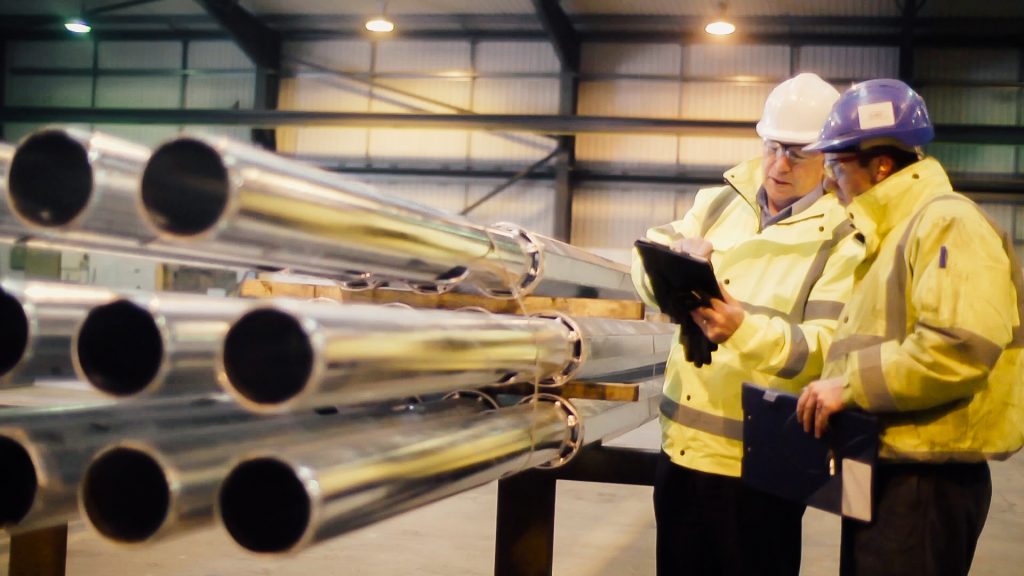
Following World Environment Day at the weekend, the Joseph Ash Group has designated the first week of June to be ‘ESG Week’. During this week, we’re raising awareness of the environment and social and governance issues affecting our colleagues, clients, and suppliers.
This is the first year for our new annual event, and so far this week, we’ve delivered presentations on ‘What is ESG?’. We’ve also provided resources (posters and links to activities) to team members to help them understand some of the terminology used (e.g. ‘Carbon Neutral’, ‘Net Zero’, ‘Carbon Offsetting’). Plus, we’ve shared advice on being more energy, waste and water conscious both at work and at home.
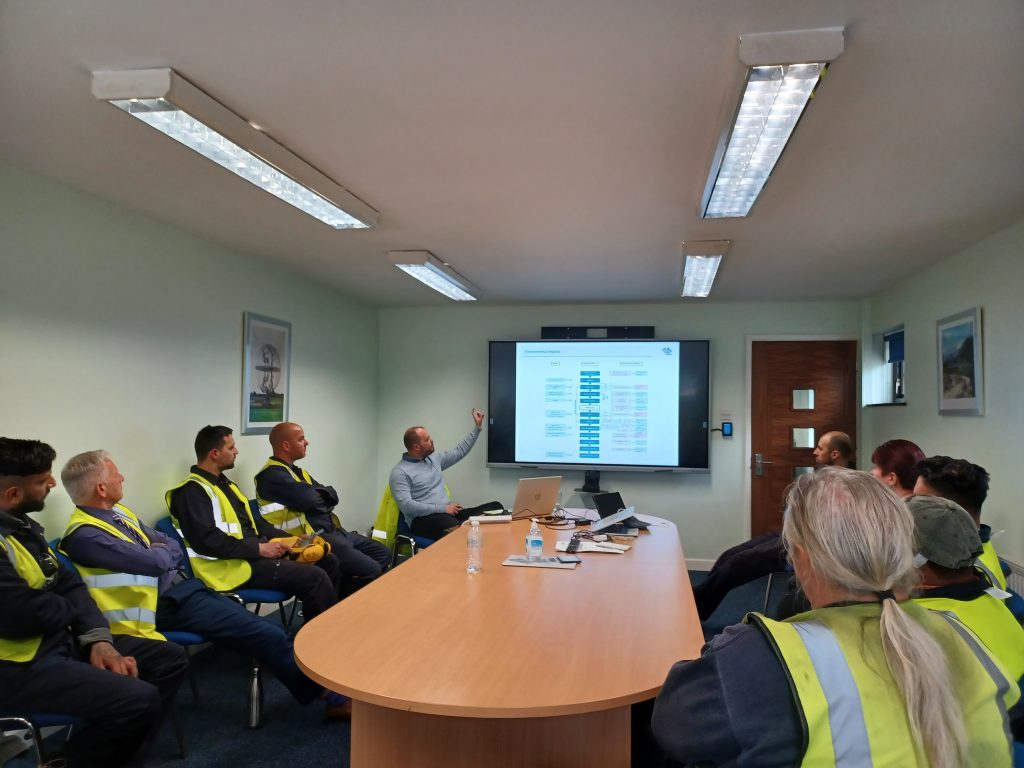
Later this week, we’ll be conducting safety tours to reinforce the importance of health and safety in the workplace.
Here are some of the important topics we’re covering:
Environment
- Compliance with all environmental legislation
- Minimise all negative environmental impacts from our operations – emissions to air, water and land
- Minimise our resource usage and support a circular economy
- Reduce our carbon emissions and work towards achieving Net Zero carbon emissions.
Social
- Managing the risks to the health, safety & wellbeing of our colleagues and other stakeholders
- Improve the talent and diversity of our colleagues and create a value-based culture within the business
- Positively engage with our local community by providing support to local initiatives and charities
- Supporting apprenticeships.
Governance
- Effectively identifying, mitigating, and controlling business risk
- Operating in compliance with all applicable legislation
- Ethically conducting business and working with integrity
- Using reputable suppliers and working with customers that support our values
- Ensuring all decision-making is carried out with our values, strategy and impacts considered.
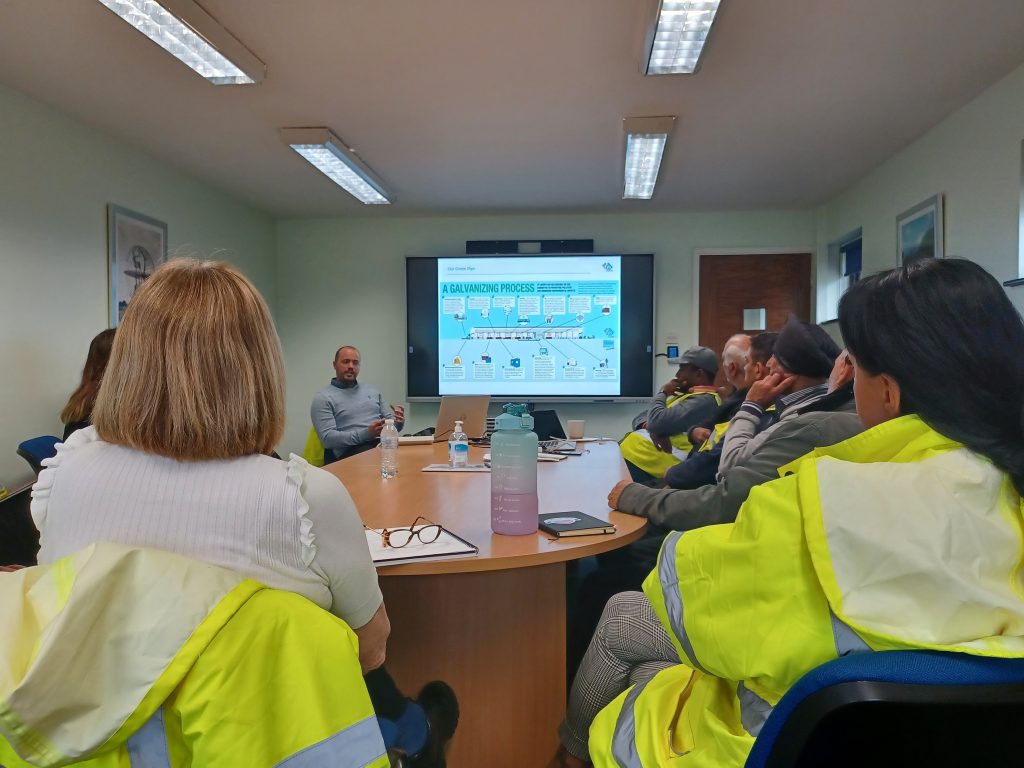
If you want to know more about ESG across the Joseph Ash Group (Joseph Ash Galvanizing and Premier Galvanizing), please get in touch. We’d love to tell you all about it!
Next page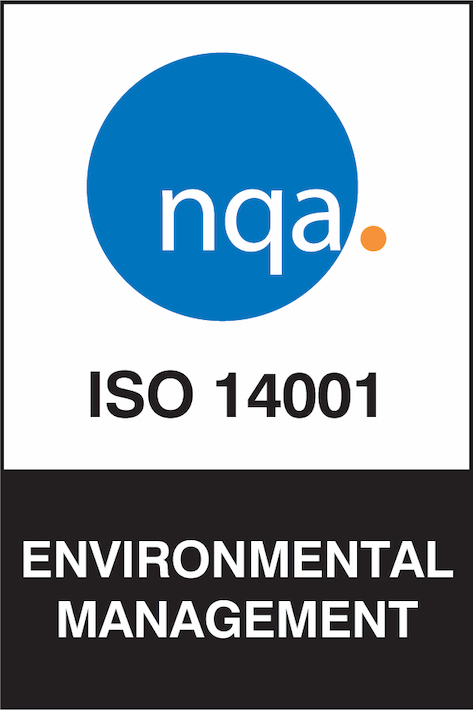
Great news! Joseph Ash Galvanizing has been awarded ISO14001, the international standard for designing and implementing an environmental management system.
The award has been granted to Head Office, as well as five of the plants: Joseph Ash Bilston, Joseph Ash Bridgend, Joseph Ash Chesterfield, Joseph Ash Telford, and Joseph Ash Walsall.
An environmental management system, often called an EMS, comprises the policies, processes, plans, practices, and records that define the rules governing how a company interacts with the environment.
Preventing companies from causing negative impacts on the environment are two of the most critical challenges facing businesses today. Achieving the ISO14001 standard shows we’re amongst the world’s businesses that care enough about the background to reduce our environmental footprint.
Congratulations to all our team members for achieving this latest standard!
Michael Worth, Head of Technical and ESG at Joseph Ash Galvanizing said “Everyone should be incredibly proud of their contributions to this achievement. This clearly demonstrates that our approach to managing our environmental impacts and our strategy to maximise environmental opportunities are on the right trajectory to delivering continual improvement in this area.”
_______________________
See some of the steps we take to minimise our impact on the environment in our Green Future plan.
Next page
As sustainability and good emission management are critical drivers for Joseph Ash Galvanizing, we always try to look for suppliers with like-minded responsible approaches to the environment.
Kall Kwik Birmingham is one of our suppliers, and we were proud to welcome them into our vendor family three years ago, as their green initiatives are admirable.
In 2019 Kall Kwik Birmingham joined Carbon Capture®, a unique market-leading, high impact, low-cost environmental initiative that creates new native woodland in the UK.
Through their involvement with Carbon Capture®, Kall Kwik enables all customers who order paper/print from them to capture the CO2 emissions from their purchases by planting native woodland through the Woodland Trust and the Woodland Carbon Scheme.
_______________________
What is Carbon Capture®?
- A method of mitigating CO2 emissions and providing a reduced carbon solution for organisations
- Creates native woodland in the UK and provides habitats for wildlife and green spaces for all to enjoy
- A demonstration of an organisation’s values and responsible approach to the environment.
Woodland Carbon and The Woodland Trust
- Woodland is the second-largest sink of CO2 after the oceans
- The CO2 is captured by the planting of trees in new native woodland here in the UK through the Woodland Trust’s Government-backed Woodland Carbon Scheme
- The scheme operates under the HM Government’s 2011 Woodland Carbon Code www.woodlandcarbon.co.uk
- 100% of the Carbon Capture charge goes directly to the Woodland Trust to plant native woodland in the UK
- The Woodland Trust is the leading UK woodland conservation charity (Charity no. 294344 /SCO38885)
- Woodland Trust aims to protect and develop natural woodland throughout the UK, thereby protecting our natural heritage
- The Trust owns and manages over 1,000 free-to-visit woodland sites across the UK. The UK has just 13% woodland cover compared to the European average of 37%.
____________________
Since joining Carbon Capture in 2019, Kall Kwik Birmingham has captured over 8500 tonnes of CO2, equating to about 210 sqm of new native woodland – roughly 35 trees!
Dene Sproson from Kall Kwik said:
“This is a fantastic achievement. Kall Kwik Birmingham and our clients should not underestimate this contribution. Whether it be 30 trees, three trees, or 3,000 trees we have helped to plant, our combined contribution to the overall programme is massive!
The critical thing we feel is that Kall Kwik Birmingham and our clients have committed to Carbon Capture®, helping to plant trees and further promote the initiative, which overall contributes to the government’s targets and commitments to NET-ZERO!”
Welcome to the Joseph Ash family Kall Kwik Birmingham. We look forward to a long relationship with you – and to planting more trees!
(Photo by Casey Horner on Unsplash)
Next pageSustainability specification complements NSSS
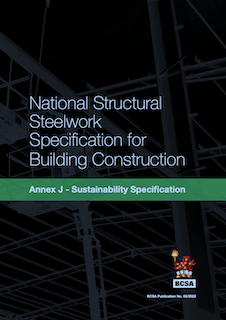
The British Constructional Steelwork Association has recently published the first edition of their sustainability specification for structural steelwork. Titled the ‘National structural steelwork specification for building construction’, it includes guidance on both the sustainable design and sustainable fabrication of structural steelwork. For example information about the relevant Environmental Product Declarations (EPDs) that need to be submitted for new steel products, steel procurement, project specifications requirements for sustainability, and guidance on reusing steel.
The publication is free to download from the BCSA website.
Next page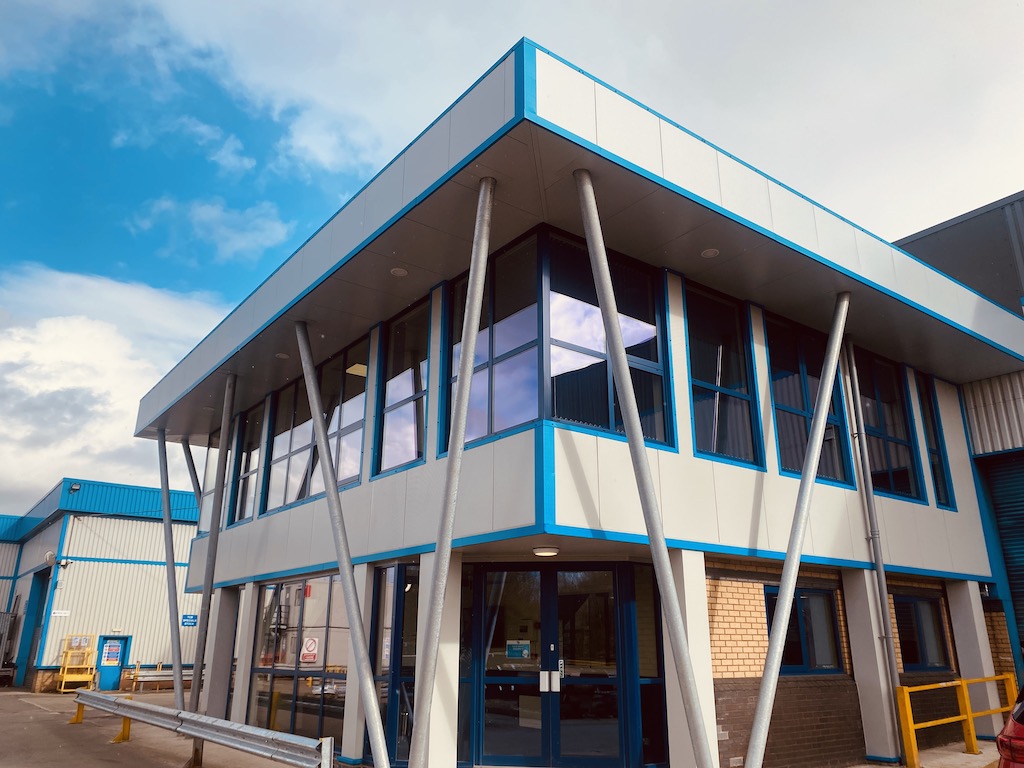
2022 marks the dawn of a good year for Joseph Ash Bilston. Not only have they opened a new office building at the plant, but they’ve also become ISO 14001 certified. Find out more!
New office building
Joseph Ash Bilston has been going from strength to strength over the last few years, and growth meant the need for a new office building.
The office building houses our team members who look after sales, the management of the plant, and accounts. But unfortunately, they had outgrown the space, and the facilities were dated.
When the plant drew up plans for a new office, it was also an excellent opportunity to ensure a new build would be as green as possible. As a result, a state-of-the-art environmentally friendly building was designed. The building work took place in the second half of 2021, finishing just before Christmas.
Joseph Ash team members moved in at the beginning of January and are pleased with the new facilities. Not only do they have more space, but there are also some environmental features to be proud of:
Solar PV array with an output of 29087kWh
The building now has fantastic solar panels that will harness greener energy. PV means photovoltaic – a way to convert sunlight into electricity.
1 phase 10kW battery storage from the solar PV array
Solar panels are great, but it’s not always sunny in Bilston! Not a problem, though, as there are solar storage systems in place to provide energy on even the greyest days. Not only a green initiative but also cost-saving for heating costs.
Heating/cooling with air source heat pump and radiant ceiling grid panels
Traditional radiators may soon be a thing of the past, as they primarily heat the air in a space. Instead, Bilston’s new radiant heating panels radiate, heating the solid objects in areas such as people and furniture. In addition, zero gas is required to heat the building, and there’s a supplementary electric boiler supplied from solar power when needed.
SunGuard eXtraSelective – SNX 60 double glazed window glass
Bilston’s new windows further reduce energy costs by delivering thermal insulation and lowering the demand for artificial lighting, air conditioning and heating.
The environmental initiatives have ensured the new office building is carbon neutral, helping Bilston maintain its status as the greenest Galvanizer in the UK.
Our environmental initiatives continue with ISO 14001 certification
We’re pleased to announce that Joseph Ash Bilston has recently become ISO 14001 Environmental Management certified. ISO 14001 certifies that Bilston has:
- Minimised how processes etc., negatively affect the environment.
- Complies with environmental laws and regulations.
- Continually improves in all these areas.
Joseph Ash Bilston and the entire Joseph Ash Group is delighted with the certification as part of our sustainability mission. Bilston is also proud to claim that they are now the greenest galvanizer in the UK.
Next page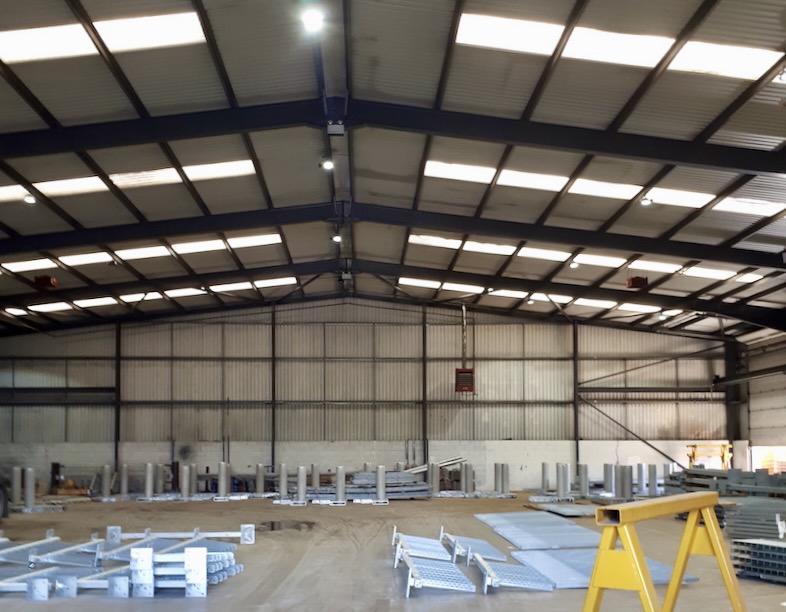
As the steel construction industry moves to net-zero carbon by 2050, embracing the ideals expressed at COP26, Joseph Ash is playing its part.
Some of our decarbonisation initiatives include minimising energy usage, reusing waste heat to warm pre-treatment tanks, and improving burner efficiency. Plant emissions are also carefully controlled to ensure neighbouring communities are not adversely affected.
Our latest carbon reduction project has changed the lighting at all plants and our Head Office to be more energy efficient.

In late 2021 we engaged MODO to replace all the high-powered traditional lighting at three sites with LED fittings and motion sensors.
For example, at our Chesterfield plant, MODO replaced over 300 light fittings. The company also installed motion sensors in low traffic areas, which power the lights on immediately when motion is detected, dimming down when the site is inactive and then powering off.
The switch to Modo LED also reduced the CO2 emissions by a massive 117 metric tonnes, equivalent to the average car driving 286,867 miles!
MODO carried out the same project at Premier Galvanizing Hull, plus our Head Office. (Other Joseph Ash Group plants were updated earlier.)
Please get in touch to find out more about carbon efficiency projects at Joseph Ash Galvanizing.
You can also see how we are committed to preventing pollution and minimising environmental impacts by viewing our Green Plan interactive infographic, newly published on our website.
Next pageGalvanized steel is an integral part of everyday life and is all around us. But how does its prevalence today affect the environment of the future? How sustainable is it? What role does it play in the circular economy? And is the galvanizing process itself environmentally friendly?
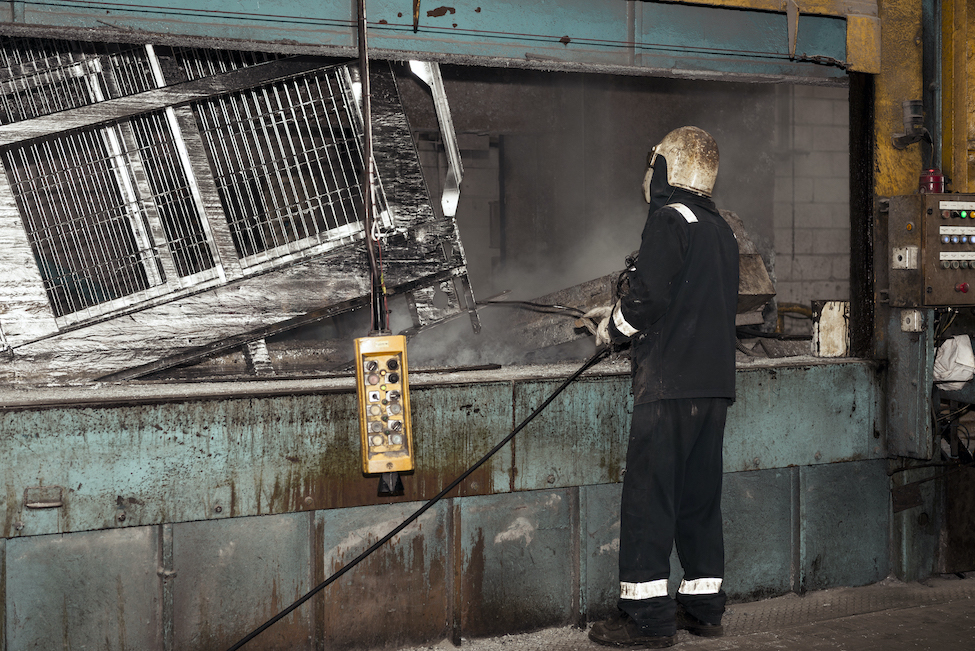
Steel is essential for housing, infrastructure, transport, manufacturing, and agriculture. Used as frames for our buildings, safety on our roads, and support for the bridges we cross, we must never waste the resources used to produce it by throwing it away when the original function is no longer valid. Instead, we must repurpose steel, especially if the world wants to move away from traditional business models of use-throw-away-remake to a more environmentally friendly, sustainable circular economy that aims to eliminate waste and repurpose resources.
What is a circular economy, and how can galvanizing play a part?
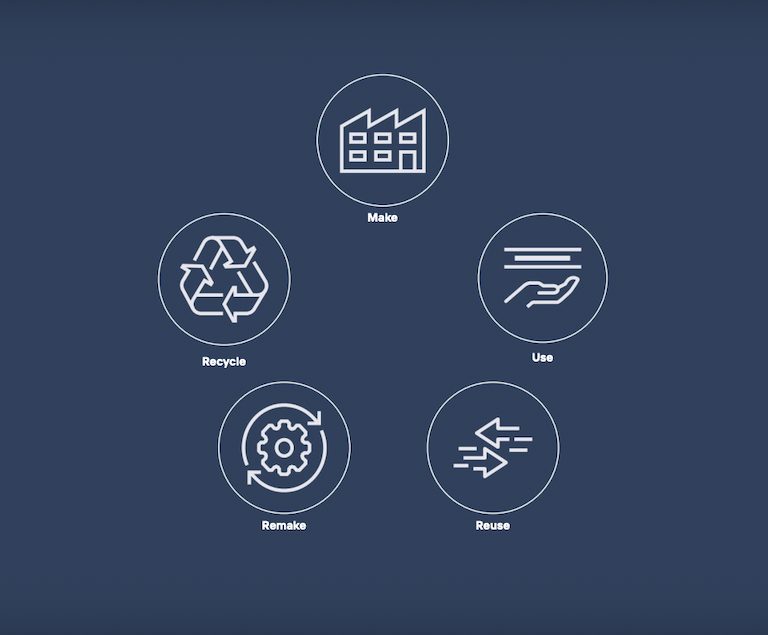
A circular economy encourages materials to be made, used, reused, remade, and recycled.
Hot dip galvanizing fits perfectly into a circular economy because it optimises the durability of steel (enabling it to be used again) and facilitates the ease of reuse. It can be recycled if there’s no immediate need to repurpose it. Here’s how:
Optimising durability
When steel is galvanized, it is immersed in a bath of molten zinc, where it alloys with the iron in the steel to form zinc/iron alloy layers. These layers form the basis of the coating, which is covered with free zinc as the steel lifts from the galvanizing bath. The result is a robust, durable, corrosion-protective finish that will last many years.
Without a galvanized coating, steel would corrode, and its lifespan would be short. However, with a galvanized coating, steel can last between 34 and 170 years before the base steel is exposed. This means that steel can be used for the original purpose for which it was fabricated, and – once the project is dismantled – the steel is still good enough to be used elsewhere.
Facilitating ease of reuse
Once a structure – such as a house or fencing – reaches its end of life, the steel can easily be repurposed if it has been hot dip galvanized. The galvanized coating protects the steel from impact and abrasion when disassembled and reassembled.
Recycling
Finally, galvanized steel fits nicely into a circular economy because it can be melted and used repeatedly without losing quality if there is no immediate need for repurposing.
The zinc coating can also be reused. Zinc and steel are recycled in well-established steel recycling processes. The zinc particulates are returned, without loss of properties, to zinc production plants, where they are incorporated into zinc ingots and reused in the galvanizing process.
How else does the galvanizing process enhance sustainability?
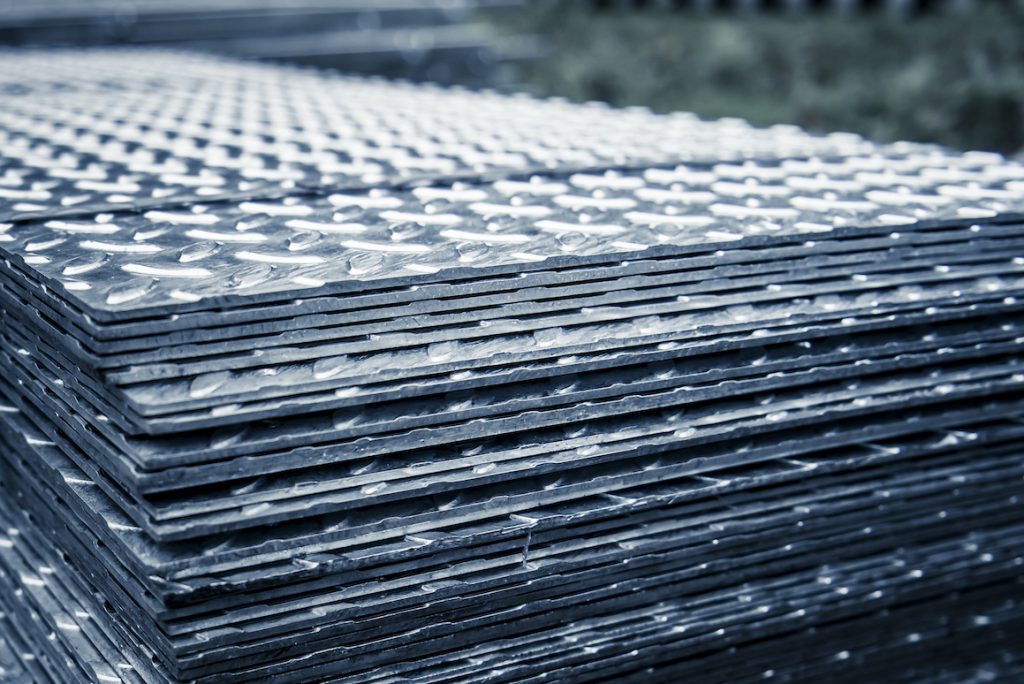
A hot dip galvanized finish gives steel a long life and durability. In addition, it creates a maintenance-free finish, which lessens the carbon emissions usually associated with the upkeep of non-galvanized steel.
Mick Jackson from Joseph Ash Galvanizing says: “Imagine a bridge made from non-galvanized steel. It would need maintenance every year to protect it from rust and corrosion. It would also need repainting at regular intervals. This requires paint, a workforce, transport for the workers and a means to protect the land or water below from paint contamination. This maintenance is not required if the same bridge is made from galvanized steel, therefore carbon emissions are greatly lessened.”
Is the galvanizing process environmentally friendly?
Galvanizing plants are self-contained, with steel going in at one end and the final product coming out at the other.
Modern galvanizing plants also use zinc very efficiently throughout the galvanizing process. For example, excess metal from the dipping process deposits back into the galvanizing bath. Zinc that oxidises on the surface is removed as ash and recycled, and dross from the bottom of the bath is routinely removed and has a high recycling value.
Other process consumables, such as hydrochloric acid and flux solutions, have important recycling or regeneration routes. Spent hydrochloric acid solutions are used to produce iron chloride for treating municipal wastewater, for example. Closed-loop flux recycling is also used in many plants, and improved monitoring and maintenance of flux tanks reduce the volume of solids for disposal. Compared to other coating technologies galvanizing uses low volumes of water, with plants rarely discharging wastewater. Any wastewater generated can be treated and reused, with only small volumes of stable solids requiring external disposal.
While not considered a particularly energy-intensive sector, the galvanizing industry also has set targets for energy efficiency and improved energy management. New technology has seen improvements in burner efficiency, bath lid efficiency, and reuse of waste heat to warm pre-treatment tanks. Plant emissions are also carefully controlled to ensure neighbouring communities are not adversely affected.
A strong commitment to the circular economy
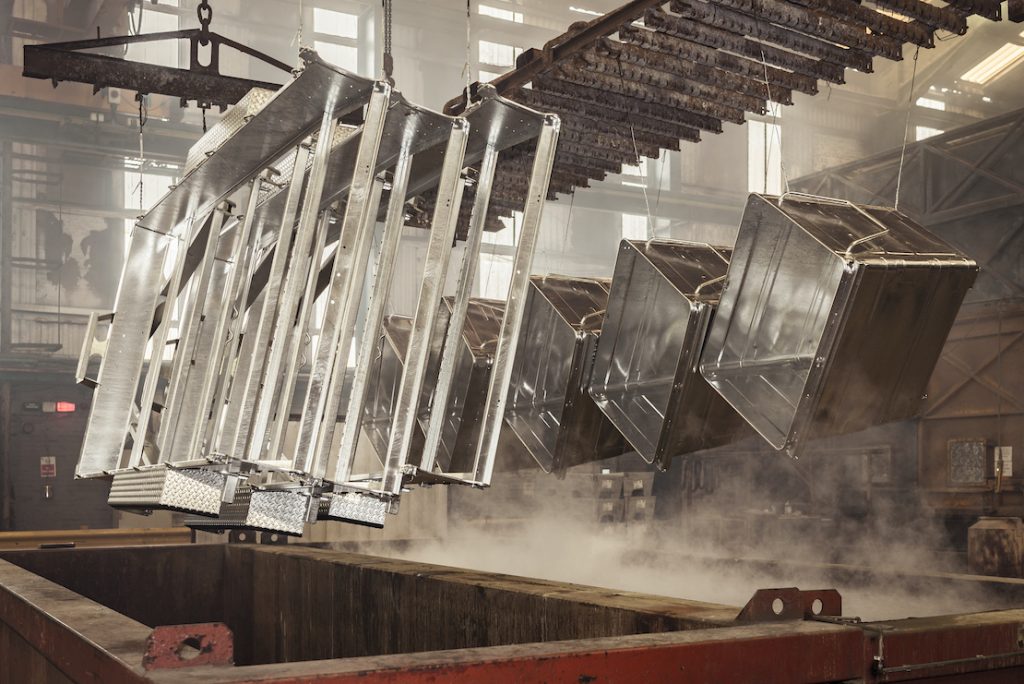
Steven Hopkins, Managing Director at Joseph Ash Galvanizing, said: “We count ourselves fortunate to be involved with such a sustainable product, playing, as it does, a critical role in extending the life of steel structures by decades. In addition, reducing our environmental impact has been close to our hearts for many years, hence our heavy investment in fume capture and recycling by-products.”
We firmly believe in a circular economy, where the needs of present-day society are met, without compromising the ability of future generations to meet their needs.”
Please get in touch to find out more about galvanized steel or the sustainability processes at Joseph Ash.
You can view the new EGGA guide – ‘Galvanized Steel and Sustainable Construction: Solutions for a Circular Economy’ here.
Next page